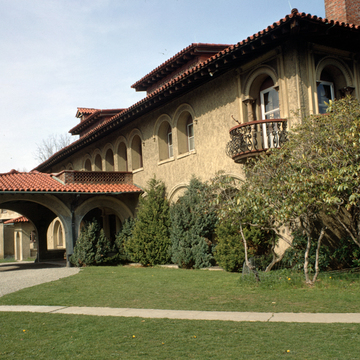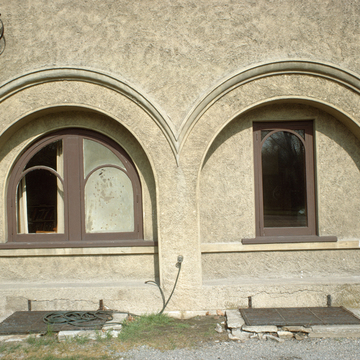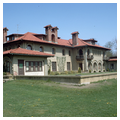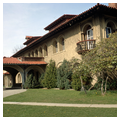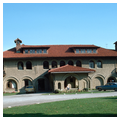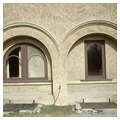You are here
St. Michael's School (Miss Ellen Mason House)
One of only three documented examples of Gill's work on Aquidneck Island (see also NE174 and PO13), this house seems decidely alien in Newport because of its design in the Califronia vernacular of Hispanic stucco. It replaced an earlier summer cottage by H. H. Richardson that had burned to the ground in 1899 and was probably commissioned through Gill's California contact with the Olmsted firm, which Ellen Mason had retained to plan the considerable gardens of her estate. Gill organized his broad wall planes of stucco under a hipped tile roof and punctuated them with a sequence of arched windows and (what were) open porches to the rear. This he embellished with ornate flourishes, like the ironwork and columns around the balconies. It may seem a house better suited to another region, but ironically it represents Gill's earliest use of a Hispanic-influenced vocabulary, for which he later became famous.
Writing Credits
If SAH Archipedia has been useful to you, please consider supporting it.
SAH Archipedia tells the story of the United States through its buildings, landscapes, and cities. This freely available resource empowers the public with authoritative knowledge that deepens their understanding and appreciation of the built environment. But the Society of Architectural Historians, which created SAH Archipedia with University of Virginia Press, needs your support to maintain the high-caliber research, writing, photography, cartography, editing, design, and programming that make SAH Archipedia a trusted online resource available to all who value the history of place, heritage tourism, and learning.


